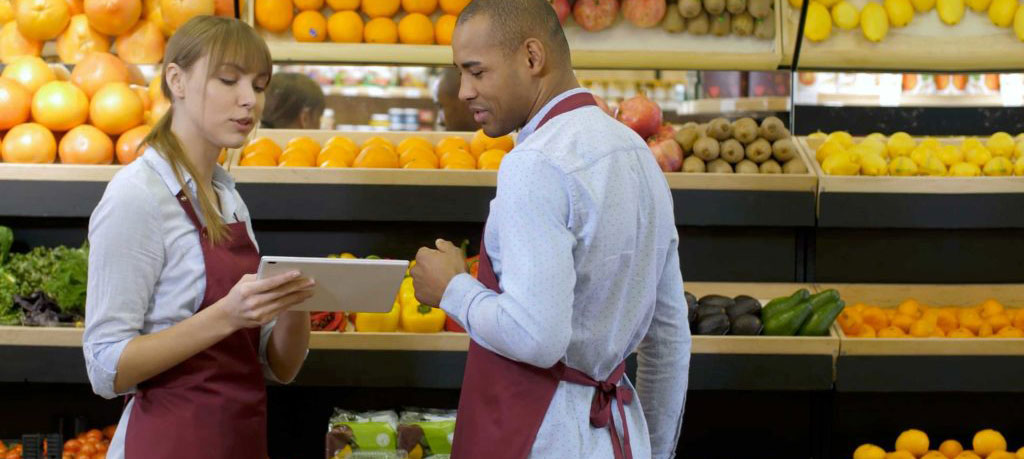If you want to understand just how outdated many of today’s merchandising execution tools and processes are, consider this: the planogram was invented by Kmart in 1970 and remains the industry standard for communicating product plans to stores.
Now consider how much merchandising has changed in the last 50 years, from the hyper-focus on customer experience to the speed and frequency of resets. In last 10 months alone, space planning has grown exponentially more complex as the pandemic forced more retail space into the dual function as fulfillment centers.
Yet, there’s been a lag in the transformation of merchandising processes across the industry. Our latest research validates this—most retailers still see merchandising as an HQ-out process. This leads to major gaps when it comes to communicating with stores and lost opportunity on the highly valuable compliance feedback loop.
With Most Merchandising Software, Communication Stops at the Shelf
Most mature retailers are using some form of merchandising software, but its functionality tends to stop at a critical point in the process—the shelf. Instead of communicating plans in an interactive way that takes into account the store associates’ experience, merchandising teams at HQ take a send-and-pray approach with their existing technology. They upload planograms to an intranet, and then have little to no visibility into what happens in the store after they hit “send.”
The most important people in the merchandising process are the thousands of employees out there in the field who are setting shelves every day. Merchandising needs to be collaborative and team-based to ensure execution is being done right.
Software can fill the merchandising gaps by improving communication, both for store associates and HQ. With the large investment retailers have made in AI and analytics, visual merchandisers and space planners have become very prescriptive in their merchandising plans. They know what needs to be put on every shelf to maximize sales.
However, our research shows that the closer you get to the shelf, the use of software declines. Store associates are left to set shelves from static—often paper—planograms. This one-way, HQ-out approach also creates a massive gap in terms of data that HQ could gather and use to further understand shopping insights.
Merchandising is Getting Harder in the Era of COVID
From a merchandising and space planning perspective, execution and compliance are getting increasingly more challenging with the pandemic.
In 2020, stores truly shifted to seasonless resets and new product launches have become more frequent. Instead of doing a big reset three times a year, a store might need to do 12 to 24 smaller resets throughout the year. To overcome the added pressure on stores to deliver on these plans, HQ should consider a steady cadence of communication so store associates can set incremental changes on a nightly or weekly basis.
Outside of resets, the demand for contactless service has escalated the importance of compliance. Curbside and BOPIS have turned retail spaces into hybrid fulfillment/shopping centers. Delivery mechanisms like third-party shoppers—be it the Instacart picker or store employee picking products for curbside fulfillment—have created an entirely new “professional shopper” constituency that retailers need to accommodate. More than ever, they have to be able to see where everything is in the store so they stock appropriately.
Consumer expectations during COVID are also higher because we’ve all gotten used to the convenience of a seamless pickup experience. That great curbside experience now needs to be matched in stores. Poor compliance leads to lost sales. When your software says there are 15 items on the shelf and you don’t reorder only to find out those items out of stock, that’s a lost sale, as well as a disappointed customer or picker. Simply put, when customers can find what they’re looking for, they buy more.
Opportunities for Better ROI
Retail organizations will always want to see the ROI before updating or replacing legacy software, and rightfully so. The right merchandising platform can save money, increase the quality of the execution, improve the customer experience and ultimately drive sales. If you can save a couple of minutes for each store associate at every shelf across thousands of stores, 365 days a year, that equates to massive savings.
There is an opportunity right now for retailers to provide their store associates with world-class digital tools that enable them to do their job better. And it doesn’t end there. Once you get those tools in the hands of the people who are setting shelves and marking compliance, retailers can capitalize on the feedback loop of rich data to make better merchandising decisions at the HQ level.
One Door’s Our platform gives retailers x-ray vision into stores in real time to see what’s happening on every shelf. Are you ready to start closing gaps in your merchandising process?
Click on our webinar, “Bridging the Retail Merchandising Execution Gap” to hear more about what we learned from 180 leading global retailers.
